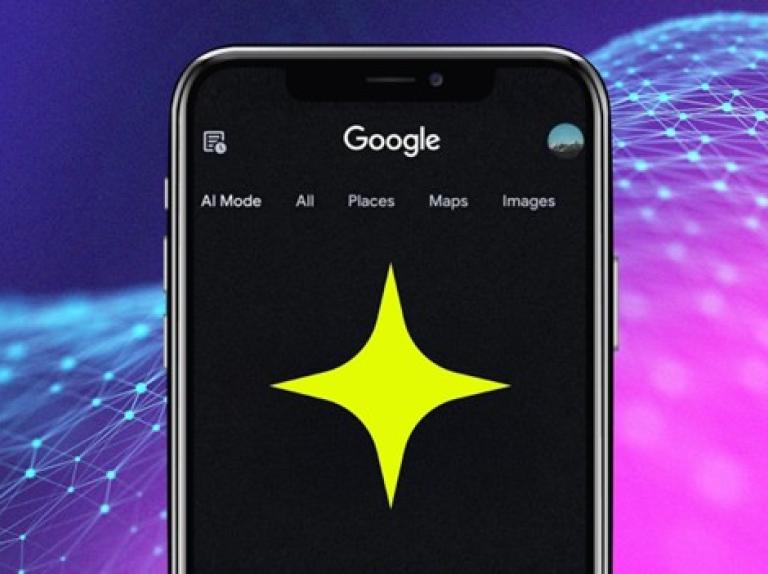
Search is changing fast—and if your DMO’s website isn’t doing the work, you’re getting skipped. In this blog, Madden breaks down what AI means for visibility, why clicks are down and what communities can do now to stay found, trusted and featured in the new era of search.
Search isn’t what it used to be.
Google’s AI Overviews, the rise of agentic AI and shifts in user behavior have completely rewritten how discovery works. Clicks are down. Instant answers are up. And your content? It has to be ready for both.
But one thing hasn’t changed: your website is still the most powerful tool you’ve got. It’s the content AI reads, the source it quotes and the voice it amplifies.
So… GEO? AEO? AIO? Here's What Those Actually Mean
You’ve probably seen the alphabet soup floating around. Here’s the breakdown:
- SEO = Search Engine Optimization. Still essential. Still the base layer.
- GEO = Generative Engine Optimization. Structuring your content so AI (like ChatGPT or Google’s SGE) can quote you cleanly.
- AEO = Answer Engine Optimization. Think FAQs and featured snippets—content that solves questions fast.
- AIO = AI Optimization. A broader umbrella that includes both GEO and AEO strategies.
- SXO = Search Experience Optimization. Making sure people—and robots—can actually use your site.
These aren’t separate tactics. They’re all ingredients in the new recipe for visibility. Let’s look at how GEO fits into—and builds on—traditional SEO efforts.
GEO Doesn’t Replace SEO. It Builds On It.
The industry loves a headline like "SEO is dead." But real talk? GEO isn’t here to overthrow SEO—it builds on it as a foundational practice. Think of GEO as the remix: you’re still creating great content, but now you’re:
- Adding sources
- Writing more clearly
- Structuring for AI to grab and summarize your answers
In fact, the best performing GEO content uses multiple techniques together (stats + citations + fluency + quotes) for maximum visibility. The new landscape of visibility is about writing content that resonates both algorithmically and emotionally—to stay visible, we now have to write for both robots and humans.
Agentic AI Is the New Front Door to Your Community
Here's the big shift: people aren’t always searching for answers anymore—they’re asking them. And AI tools are responding on their behalf.
Agentic AI refers to artificial intelligence tools that can act independently to complete complex tasks for users. Unlike passive search engines that wait for queries, agentic AI actively browses, summarizes and synthesizes content to deliver answers without the user ever clicking a link.
These tools (like Google SGE, ChatGPT, or Perplexity) are now:
- Scanning content.
- Comparing sources.
- Summarizing findings.
- Recommending actions.
The challenge? Discovery is no longer just about being first. It’s about being found by the tools people trust.
The Rise of Conversational Search: What Travelers Are Really Doing Now
Here’s what the data’s telling us:
- 54% of consumers now use conversational search to explore options.
- 27% prefer chatbots over traditional engines.
- 45% say AI tools play a role in their shopping or planning journey.
- And get this: AI-driven retail traffic is up 1,200% year over year.
So what does that mean for destination marketers? It means more travelers are asking “what should I do in X this weekend?” and expecting instant, conversational answers. They’re not typing keywords—they’re talking like people. If your content doesn’t feel like it can hold that conversation, you’re going to miss the moment.
AI Max Search Ads Launched:
Google’s AI Max ads are the new kid on the paid search block. They use generative AI to build search ads—headlines, descriptions and all—based on your brand assets, product feeds and landing pages.
They're responsive, automated and deeply influenced by how well your SEO content and AI lines up with user intent. If your site isn’t clear about what you offer? That AI can’t sell it either.
AI Isn’t Skipping Ads—It’s Reading Them
Think those AI-powered answers are skipping sponsored stuff? Think again:
- Large language models (LLMs) click no ads 86% of the time
- They pull content directly from ads 66% of the time
- And they even quote ad copy verbatim in 36% of product suggestions
That means your ad strategy isn’t just influencing humans, it’s training the AI that builds search results. If your landing page is tight and your ad copy is dialed in, you’re shaping both what AI learns and shares.
Google’s June Core Update Hit Hard:
The June 2025 update was Google following up on its March shake-up with, “No really—we meant it.”
This broad core update reshuffled the SERPs. Google doubled down on rewarding sites with real-world expertise and trust—if your content felt thin, soulless or like it was scraped together by a sleepy bot, the algorithm noticed.
Some sites previously hit by the September 2023 Helpful Content Update actually clawed their way back. You read that right—Sites that invested in human-first, experience-rich content started to recover. Those still pushing low-effort, keyword soup? Not so much.
TL:DR? Google’s still pushing hard on E-E-A-T and topical authority. It's not just about core vitals or keywords anymore; it’s about showing up like you know what you’re talking about—because if you don’t, there’s someone else ready to take your place.
Zero-Click ≄ Zero Value
Here’s the kicker: 80% of users now rely on zero-click answers—meaning they never visit your website, read your blog or tap that “learn more” CTA.
It’s easy to see that as a loss. But it’s actually a challenge to design for discovery. The question isn’t “how do we get more clicks?” anymore. It’s “how do we make sure AI is quoting us when it gives an answer?”
That starts with building content that’s clear, quotable and trustworthy. Because the next best thing to a click is being the voice behind the AI’s answer.
What This Means for Communities & DMOs
For destination marketers, this is a full-on mindset shift. Your website has to function like your community’s best local guide, customer service rep and hype person, all rolled into one. Your digital presence doesn’t need to be louder; it needs to be smarter. Think less “look at us” and more “here’s what you need to know, right now.”
How to Rank in AI Overviews: What You Can Do Now To Adapt:
Write for Humans, Structure for Machines:
Your website should read like your most knowledgeable local—and be organized behind the scenes so search engines can’t miss what matters. That means writing content that feels conversational and specific (think: “What to do with kids on a rainy Saturday in Traverse City,” not “Family-friendly activities”), while making sure it's technically built for clarity.
Here are some strategic moves to consider:
- Bring in original insights. Whether it’s a quote from a local partner or a unique stat no one else can claim—unique info gives Google a reason to choose your content when testing how to rank in AI Overviews.
- Use clear headings. A smart heading structure (like consistent H1s and H2s) helps both users and AI skim, scan and understand faster.
- Add scannable elements. Bullet points, listicles, and FAQs not only improve readability—they’re exactly the kind of SEO content that AI loves to surface.
- Connect your content. Instead of scattered pages, consider building anchor pages that link out to related articles or guides—this helps create a SEO content and AI ecosystem that builds authority.
Be the Local Expert AI Wants to Quote:
Generic content gets you generic results. But hyper-specific, insider content that’s unique to your community? That’s what AI wants—and even better, what travelers trust. Google is looking for firsthand detail, local context, and unique insights.
Here are a few questions to ask yourself to understand how well your content is structured for this new landscape:
- Do you explain why your hiking trail is special—not just that it exists?
- Are your event listings updated, thorough, and searchable?
- Do you break down what makes your community different in a way that sounds like a person, less like an elevator pitch?
Local storytelling + accurate information = the content AI loves and travelers actually use. Be the one with the answers. Otherwise, the internet will find someone else who is.
Want proof this strategy works? Look at what Discover Puerto Rico’s doing. Their site doesn’t behave like a tourism brochure—it’s a content machine built for curiosity. One minute you’re reading about salsa rhythms and street art, the next you’re planning a trip because you need to see where your favorite Netflix series was filmed.
See how we brought that strategy to life →
Prioritize User-Generated Content Channels
AI is scanning the open web for answers—but it’s not pulling from glossy brand campaigns. It’s pulling from where people are actually talking. Platforms like YouTube, Reddit and Instagram are increasingly influential in shaping AI’s (and Google’s) understanding of what’s helpful, relevant and real.
That means your SEO content and AI strategy can’t stop at your website.
- YouTube: Google owns it, prioritizes it and ranks it highly in search. Videos that answer real questions (“Best fall drives in Northern Arizona,” “What to eat near Acadia National Park”) can feed both human searchers and AI with content that sticks.
- Reddit: The raw, unfiltered nature of Reddit conversations makes it a goldmine for AI training. Be part of those threads. See what questions travelers are asking. Better yet, create and manage a subreddit for your destination that answers questions before they ask.
- Instagram: Meta recently announced that Instagram content—specifically text-based posts with captions—can now be indexed and shown in Google search results. That means your social posts aren’t just fueling engagement on-platform anymore—they can now contribute to your overall visibility in search, giving your content life beyond the app and outside your website.
Human-first platforms reward relevance, not polish. They give your community’s story reach, credibility and staying power in the age of AI. So when researching how to rank in AI Overviews to build your strategy, go where the conversations are happening—and make sure you’re part of them.
Amplify What You Create
Creating great content isn’t enough, you need to distribute it where AI can find it. That’s where tactics like high-impact editorial placements and interactive content come in:
- Editorial PR: Your Secret Weapon for AI Visibility: Distributing strong editorial content across tech, lifestyle or travel platforms (like CNET, Wired, Travel + Leisure) boosts your authority, your reach and your AI quotability.
- Interactive tools (think quizzes, micro-apps, maps) embedded on your site and across premium publishers give travelers a reason to engage—and to give AI something to crawl that stands out.
- Pre-search content hubs—organized, SEO-driven libraries of relevant info—make it easier for travelers and search engines to find answers without a deep dive.
Conclusion:
Your website isn’t a backup plan anymore. It’s the foundation for everything AI (and Google) decides to show.
If your content is invisible, out-of-date, or written like a press release, you’re not in the room when AI is making decisions. You’re not getting surfaced in Overviews. You’re not showing up in AI Max ads. And you’re not giving travelers a reason to trust what you say about your community.
Looking for more resources on the state of SEO and search? Check out our recent webinar, all about the current search landscape and what it means for DMOs.
The algorithm’s not slowing down—and neither are we. Stay up to date with Madden for bite-sized insights, smart takes, and the latest shifts in search (before they hit your rankings).
Submit Your Thought Leadership

Share your thought leadership with the Destinations International team! Learn how to submit a case study, blog or other piece of content to DI.


